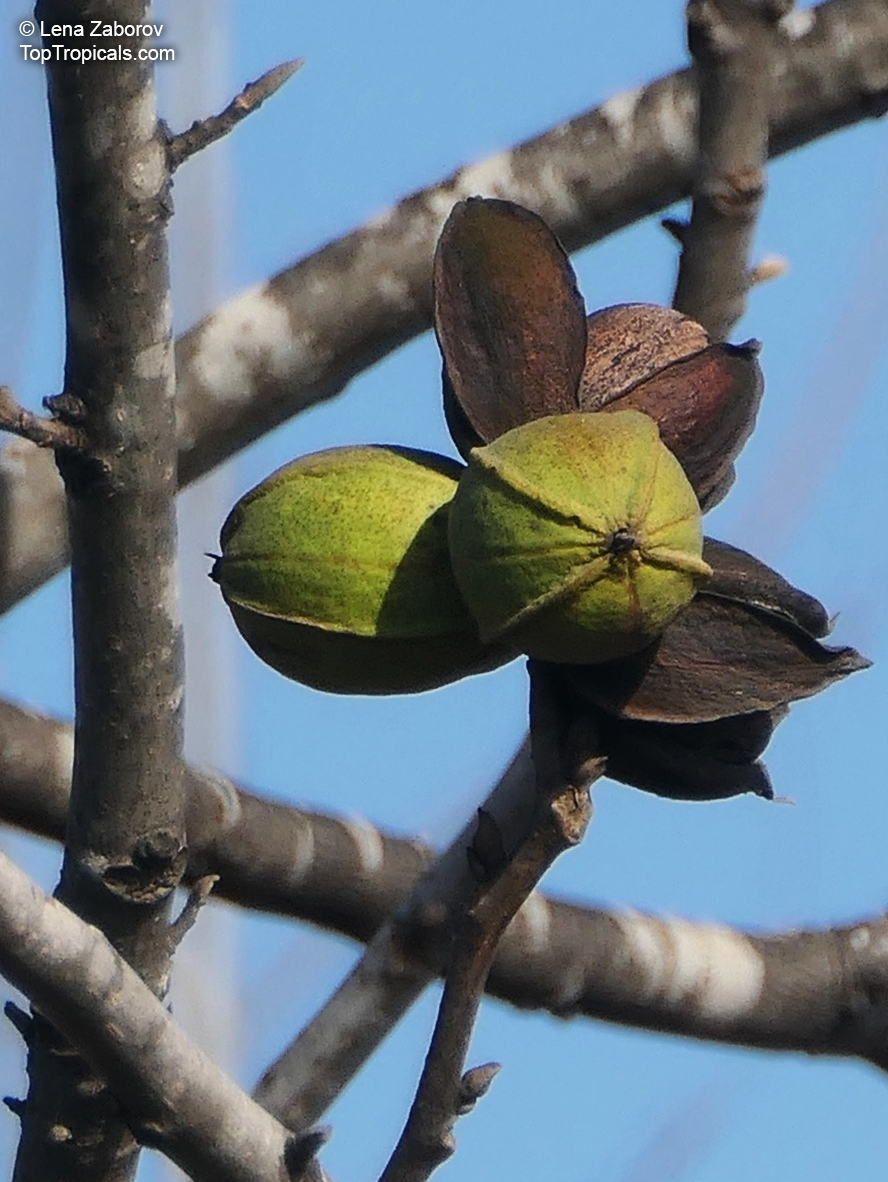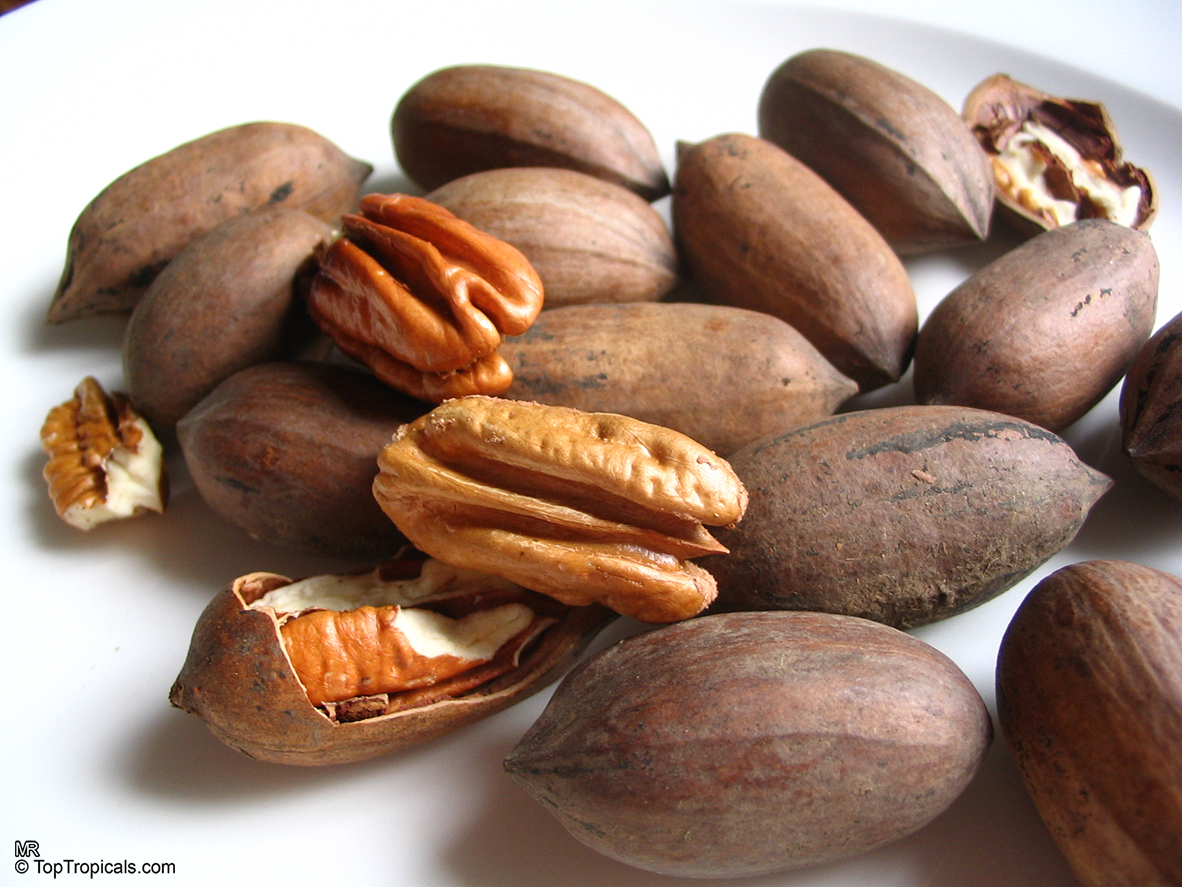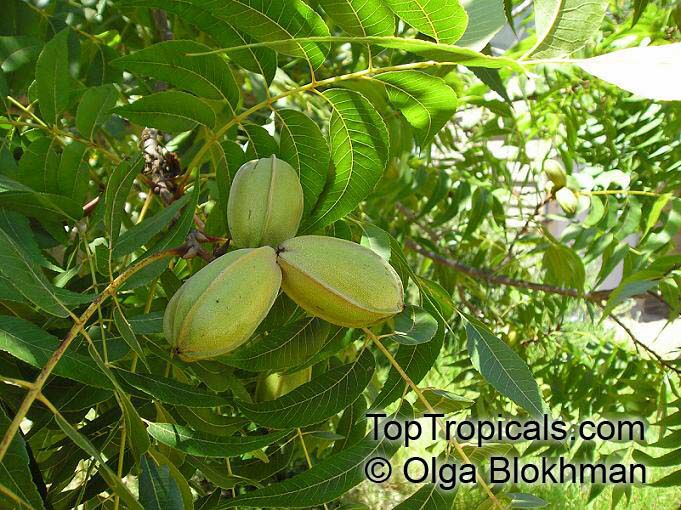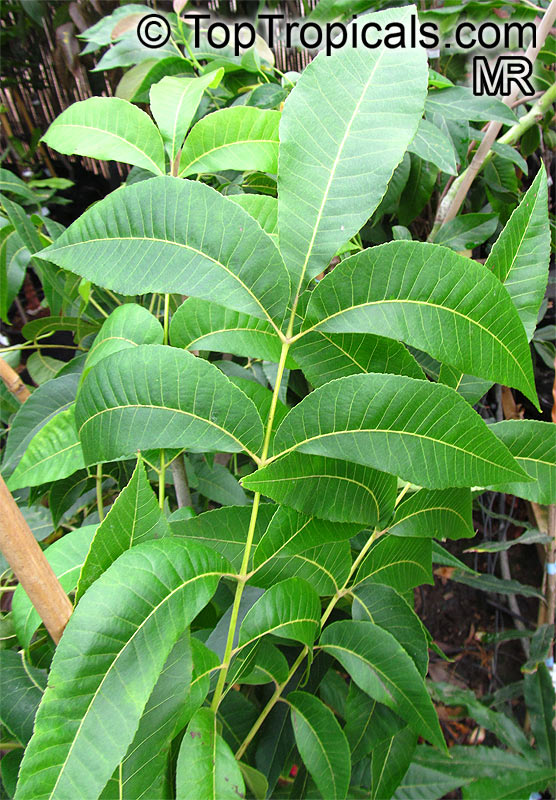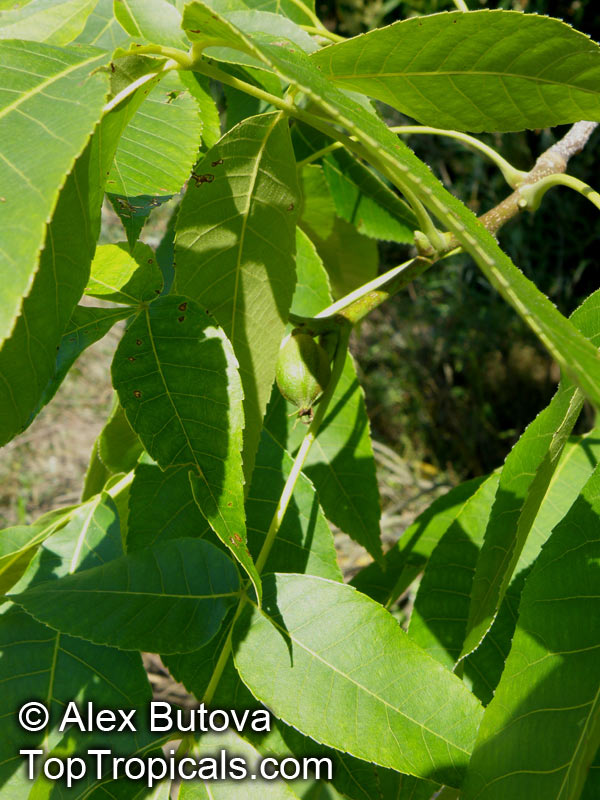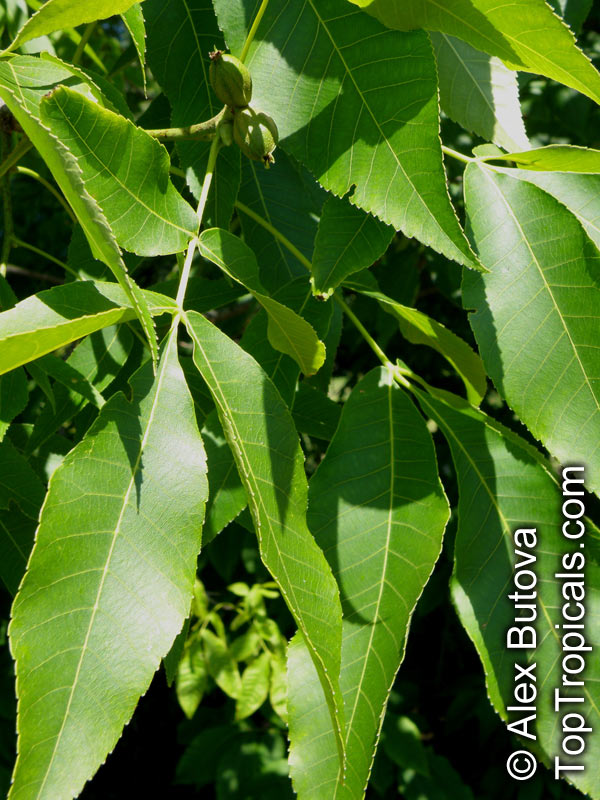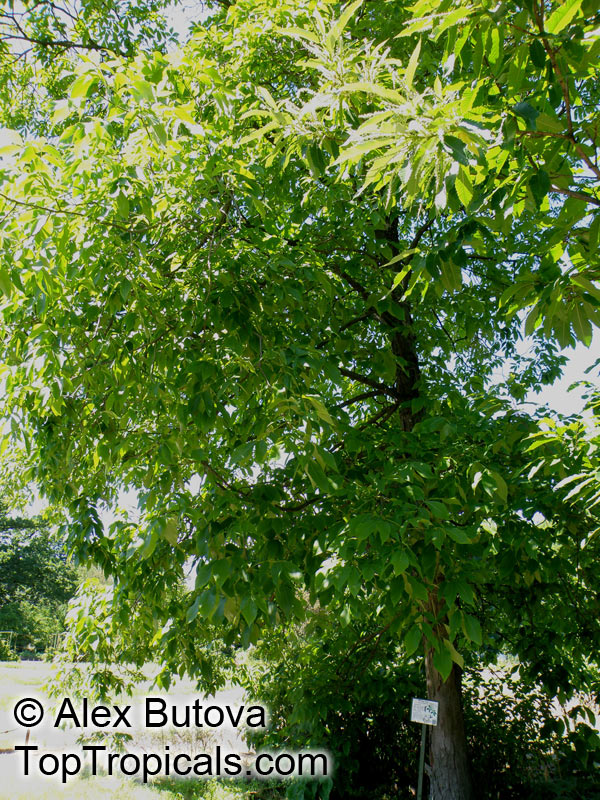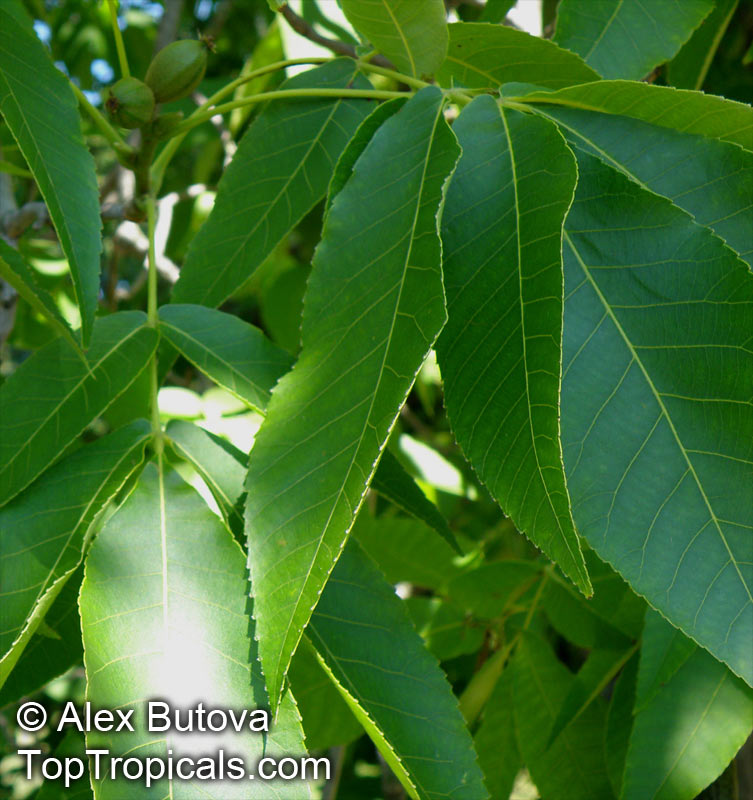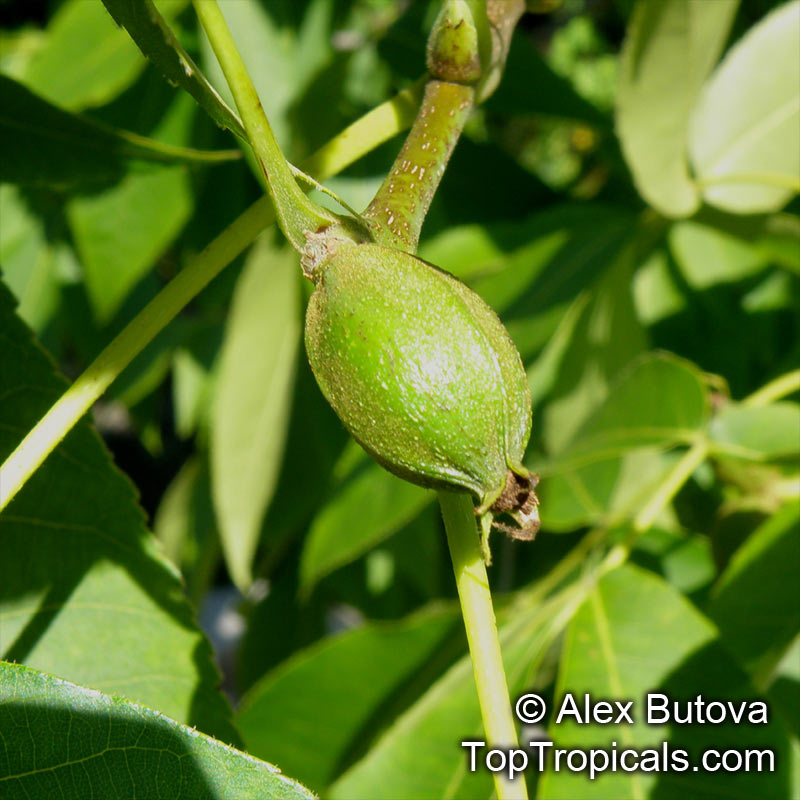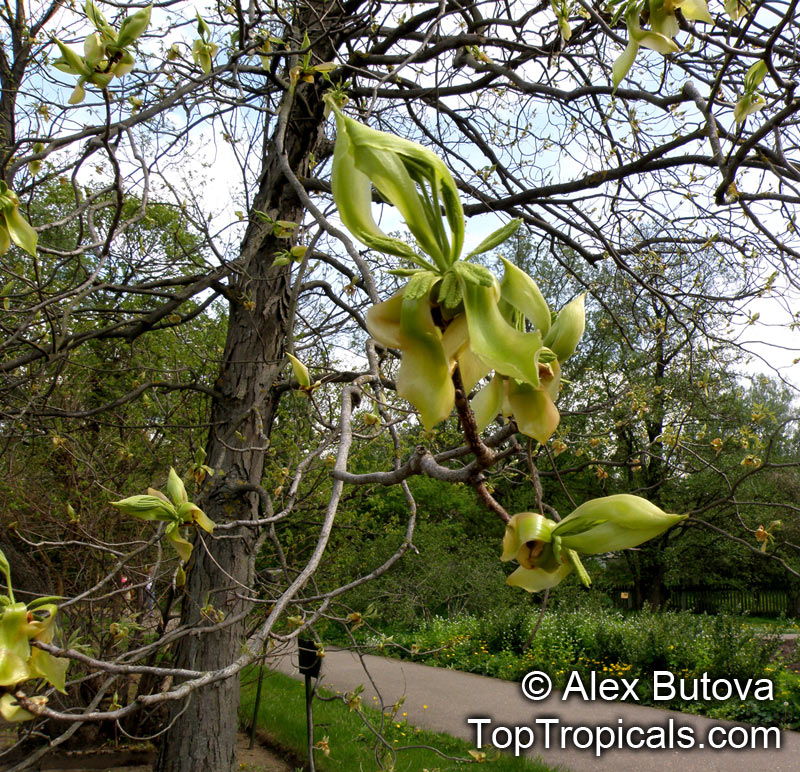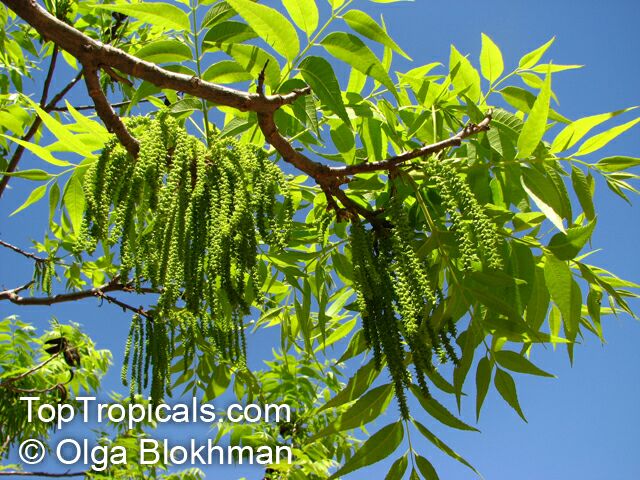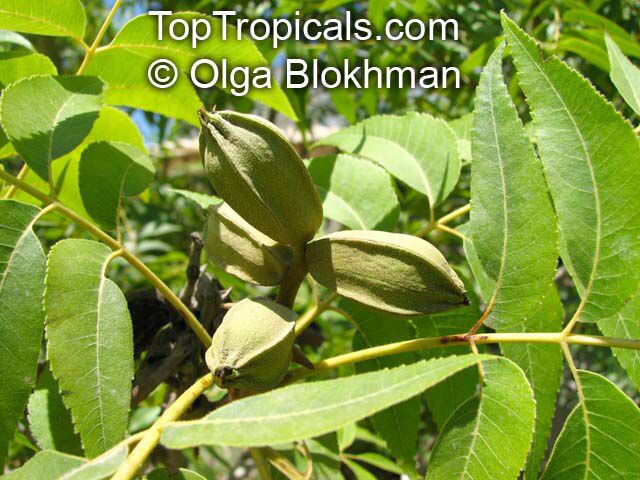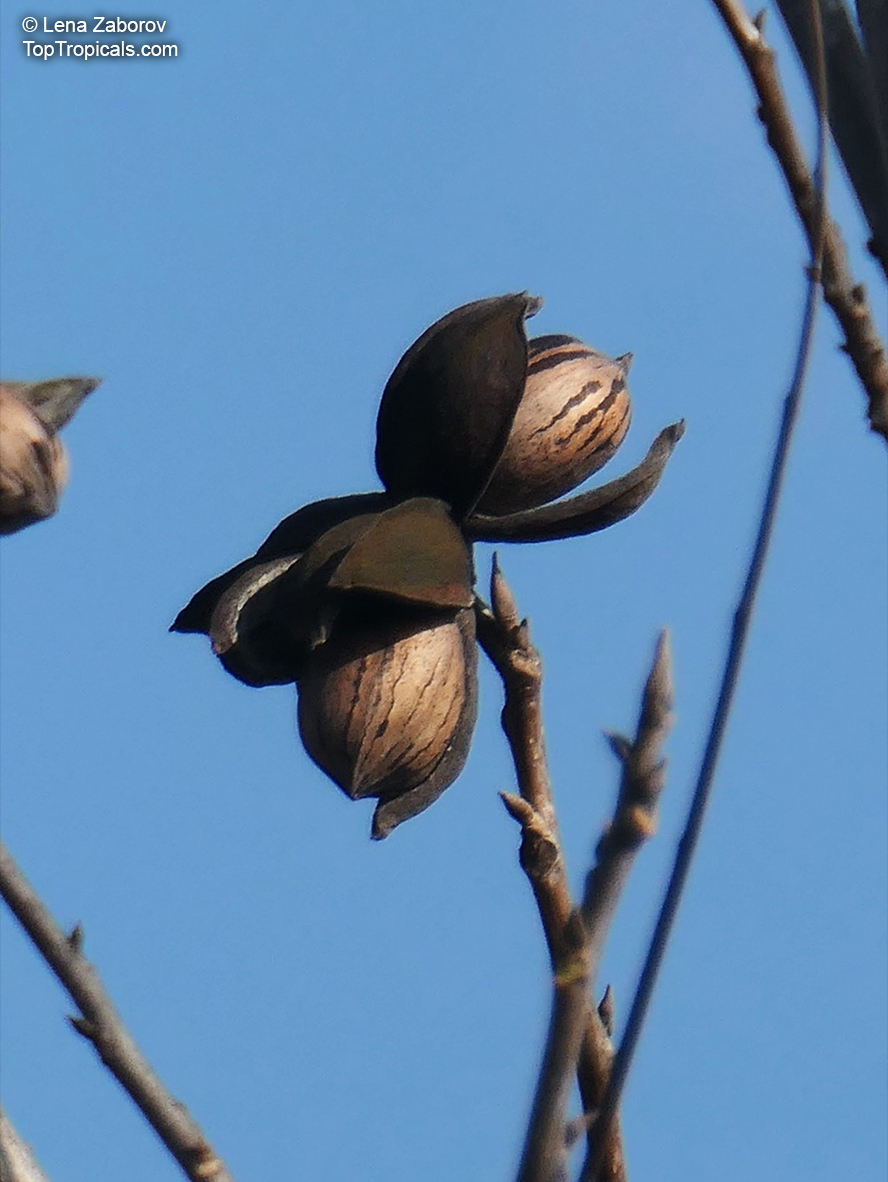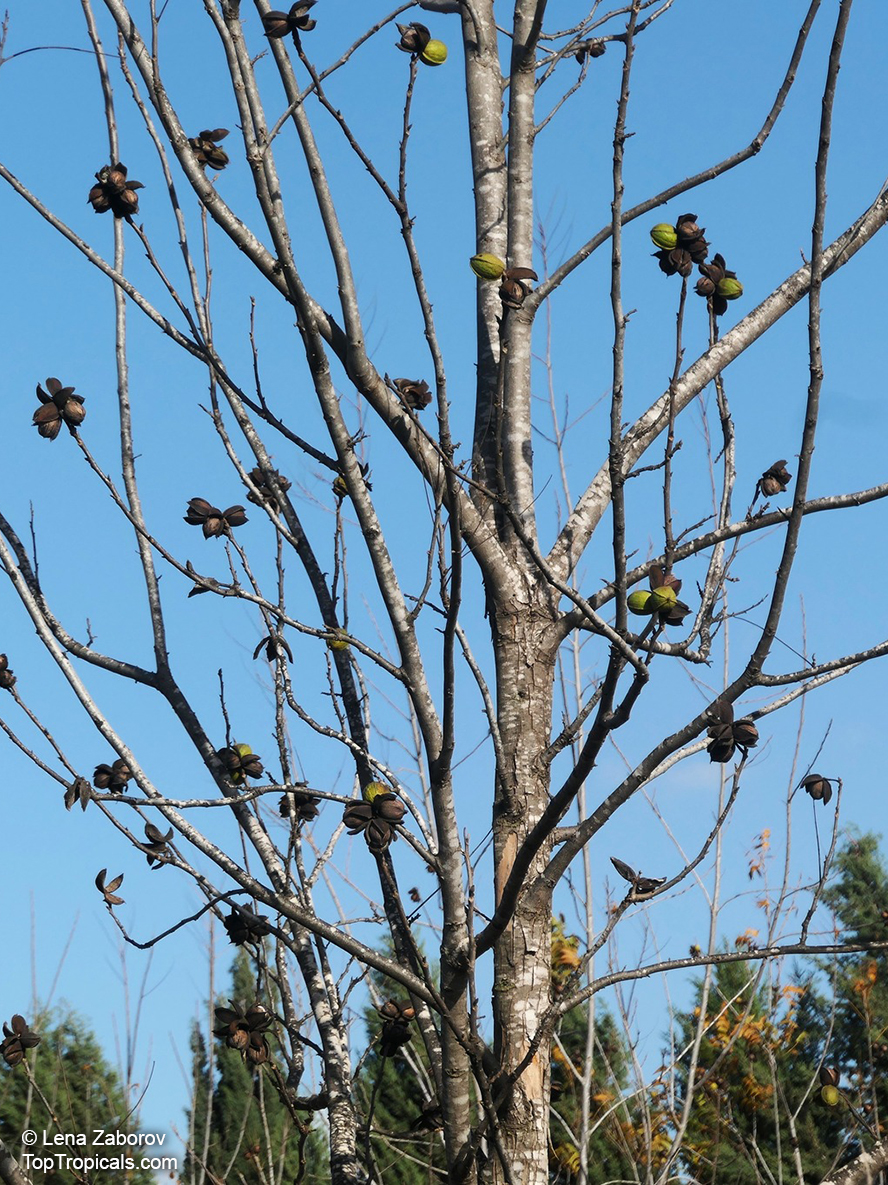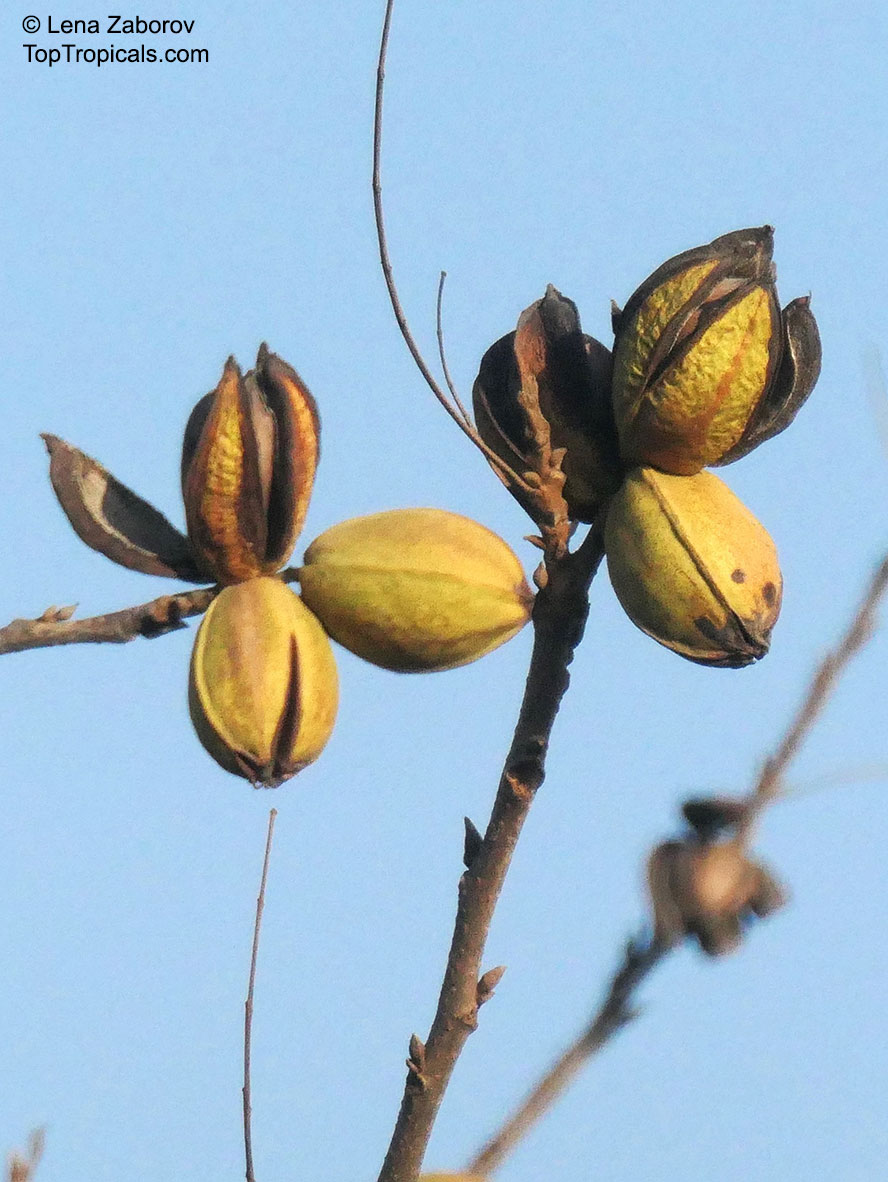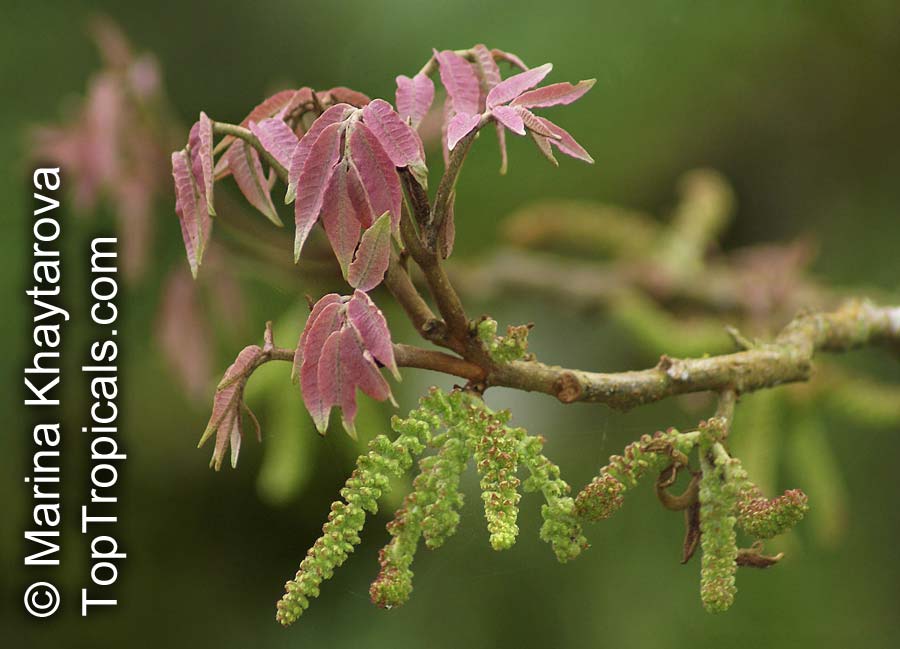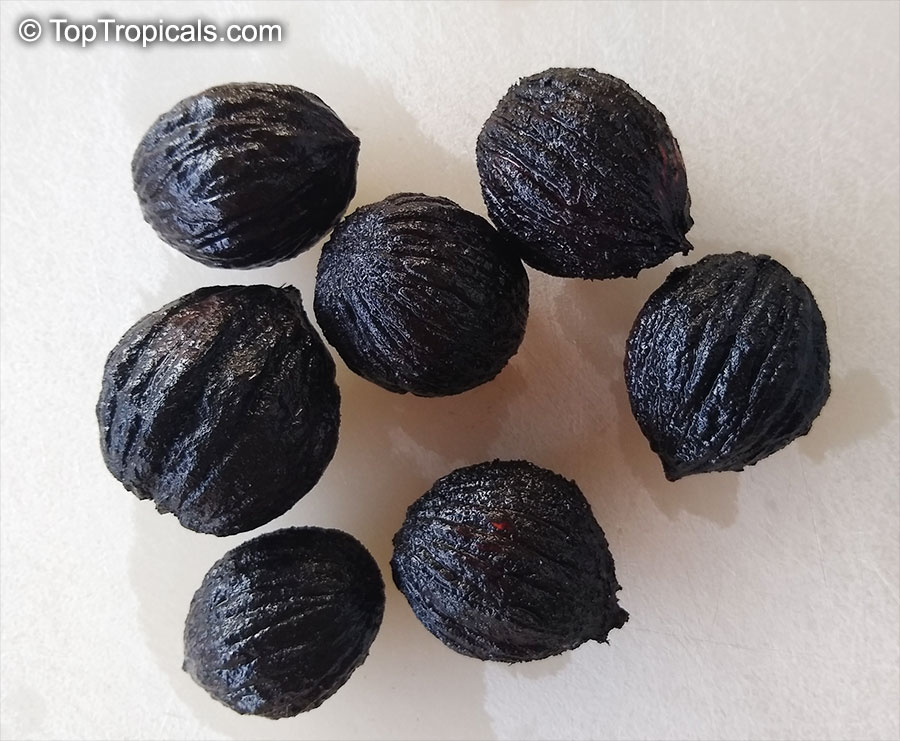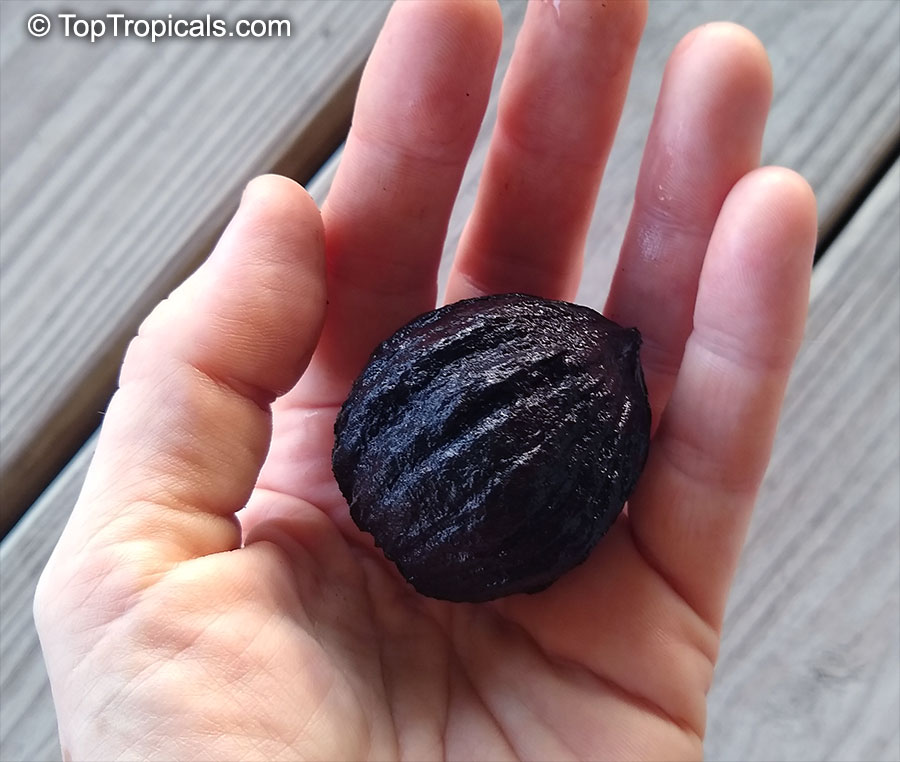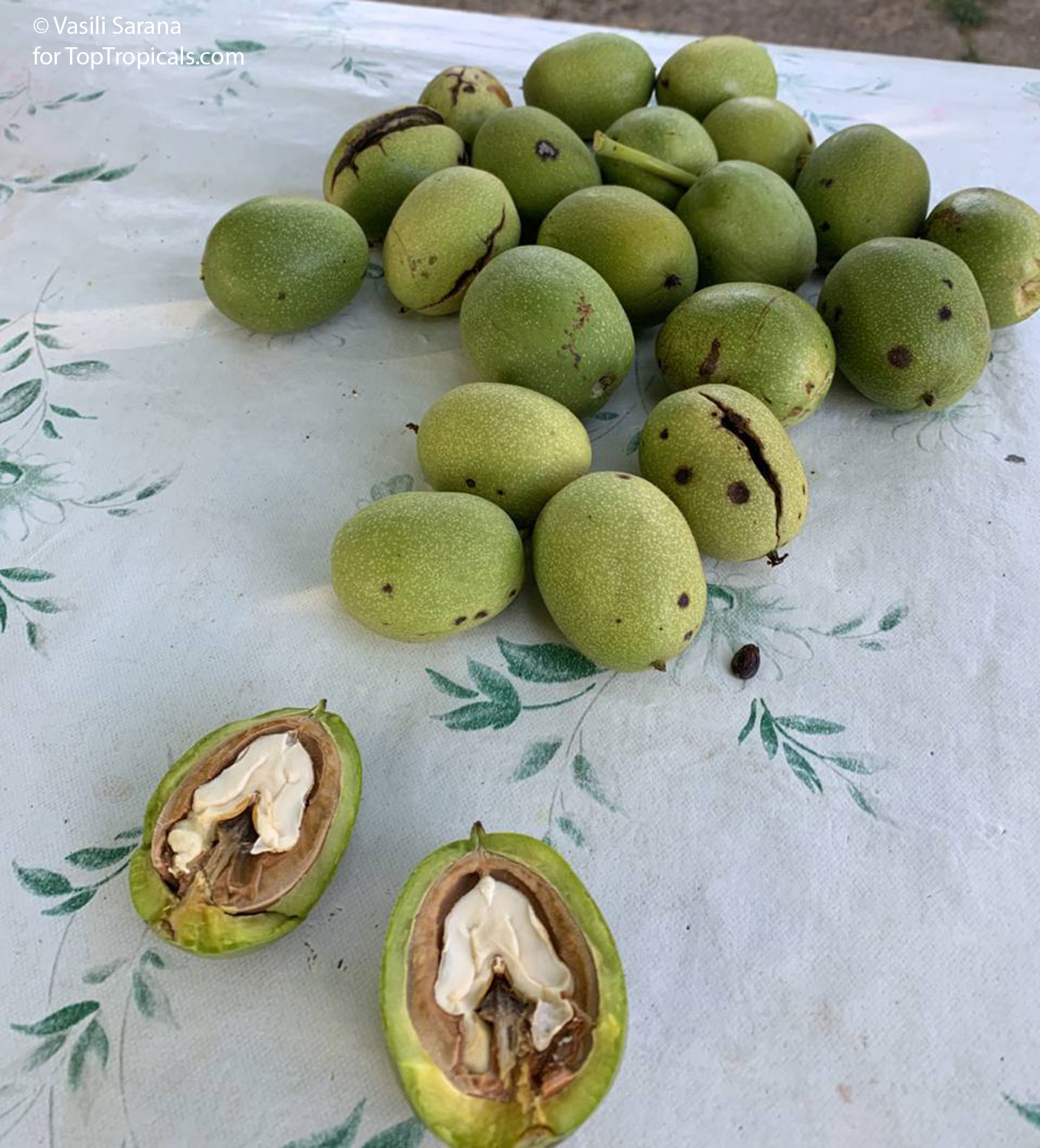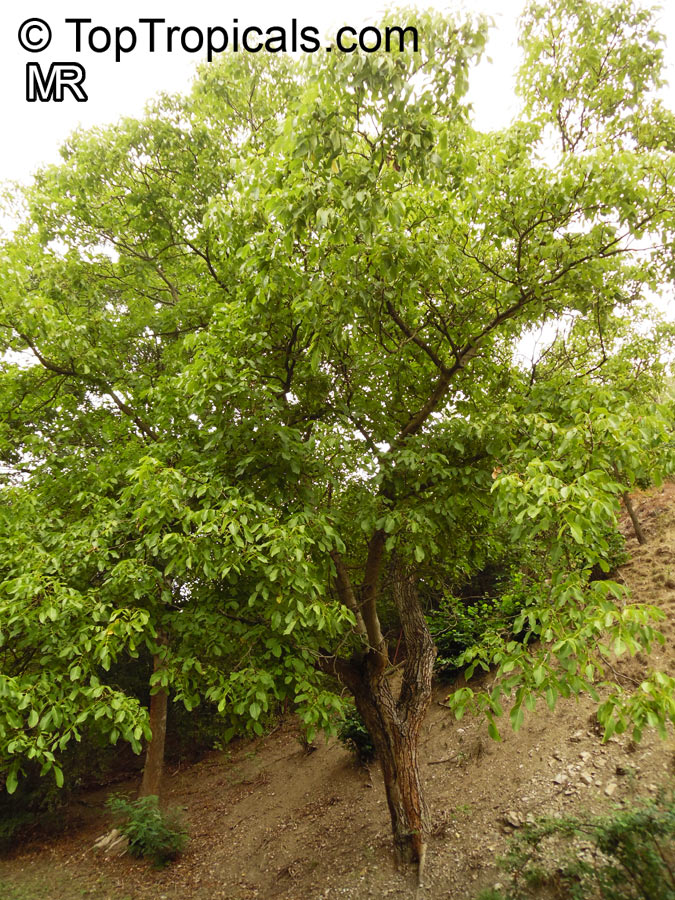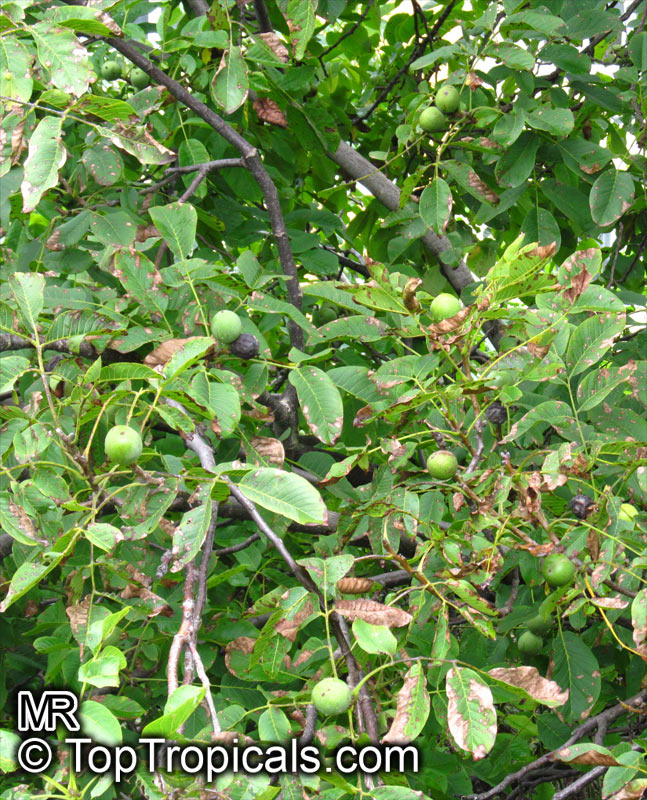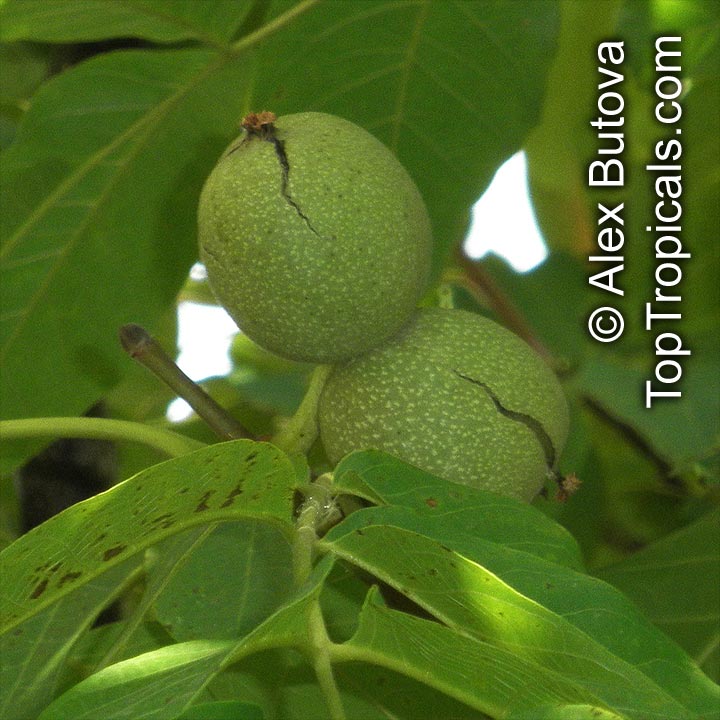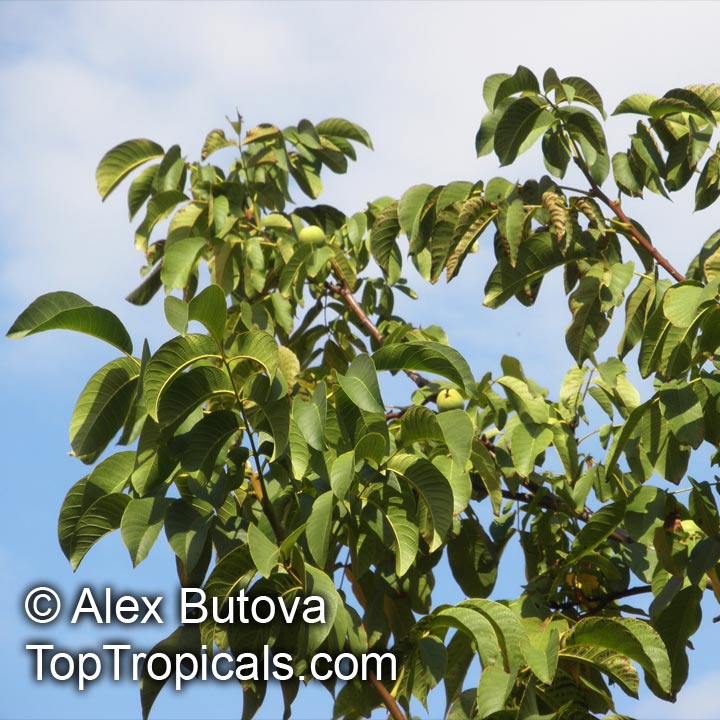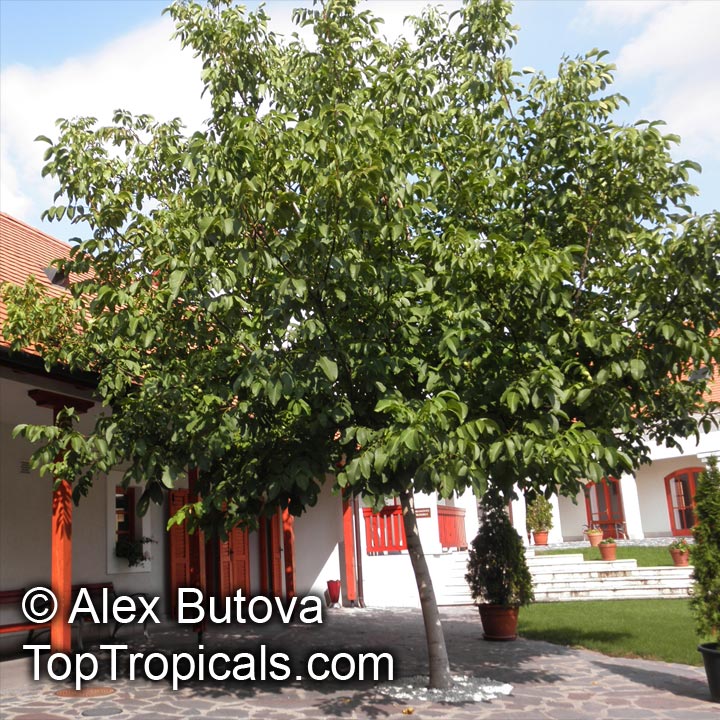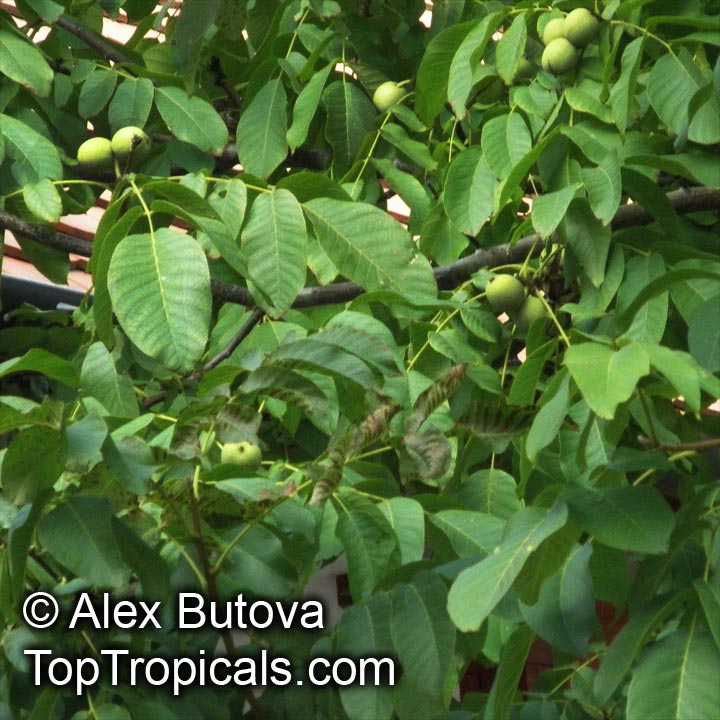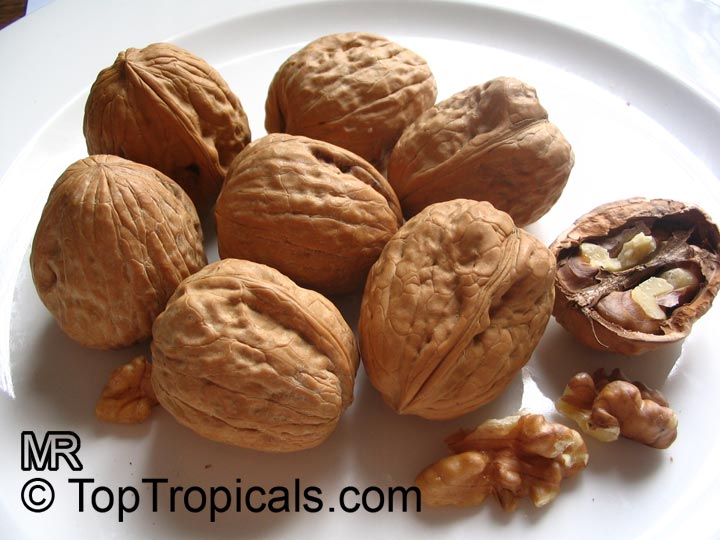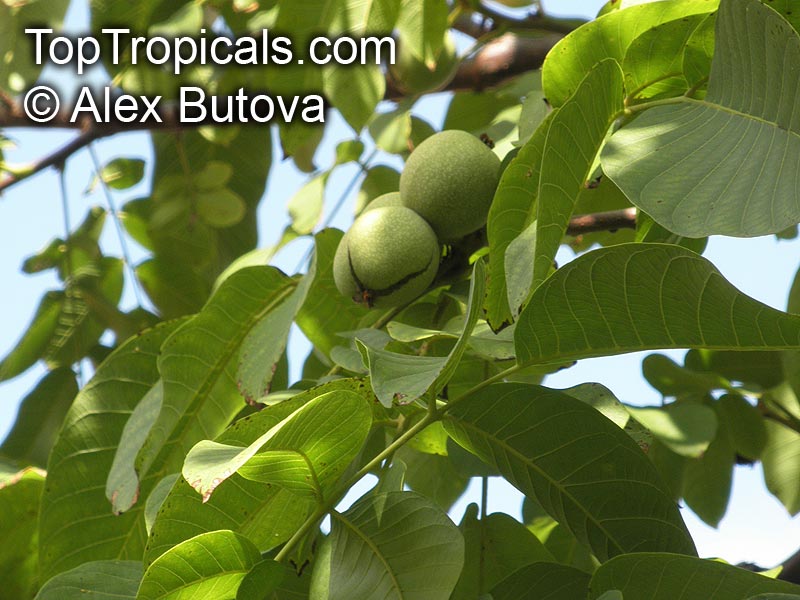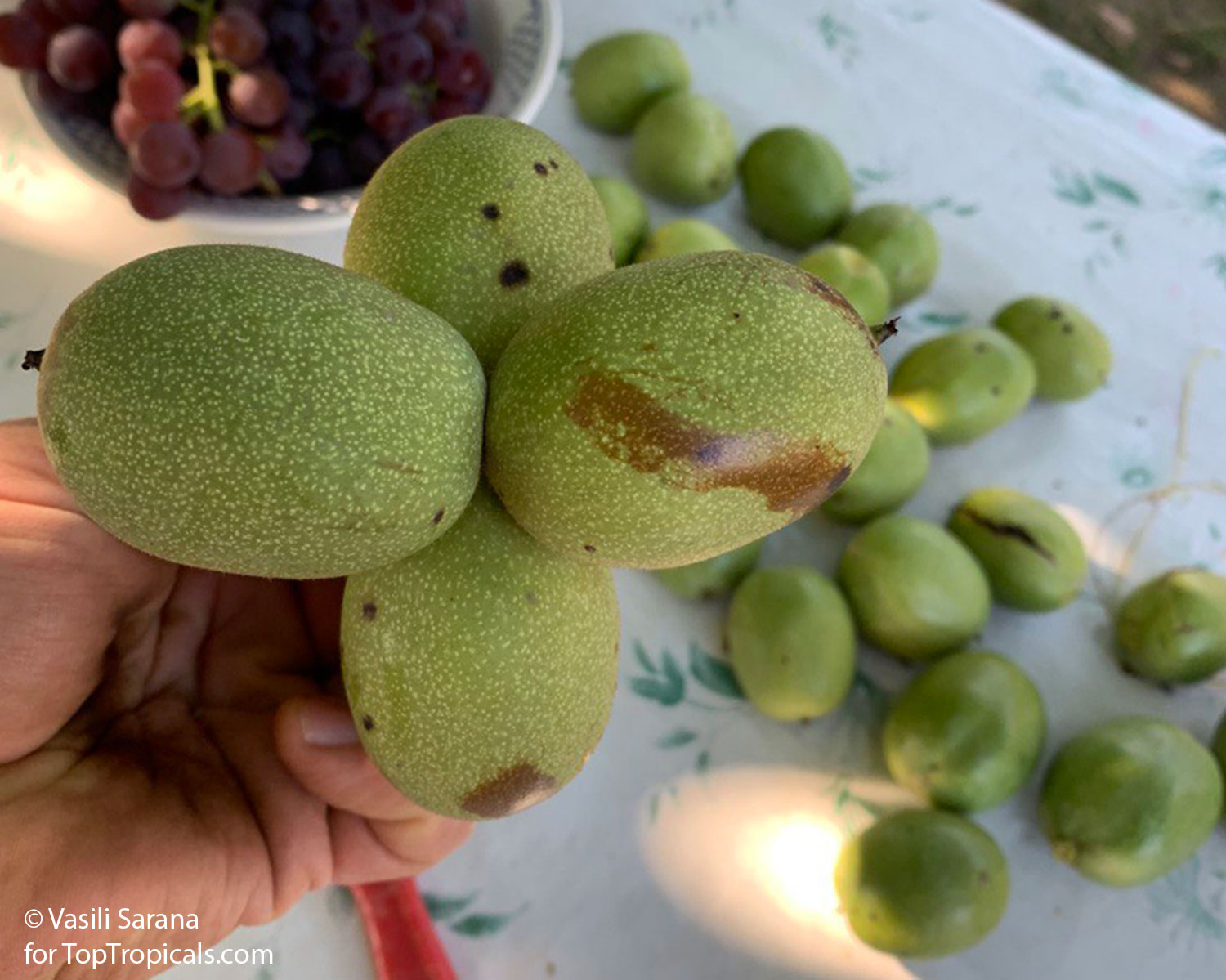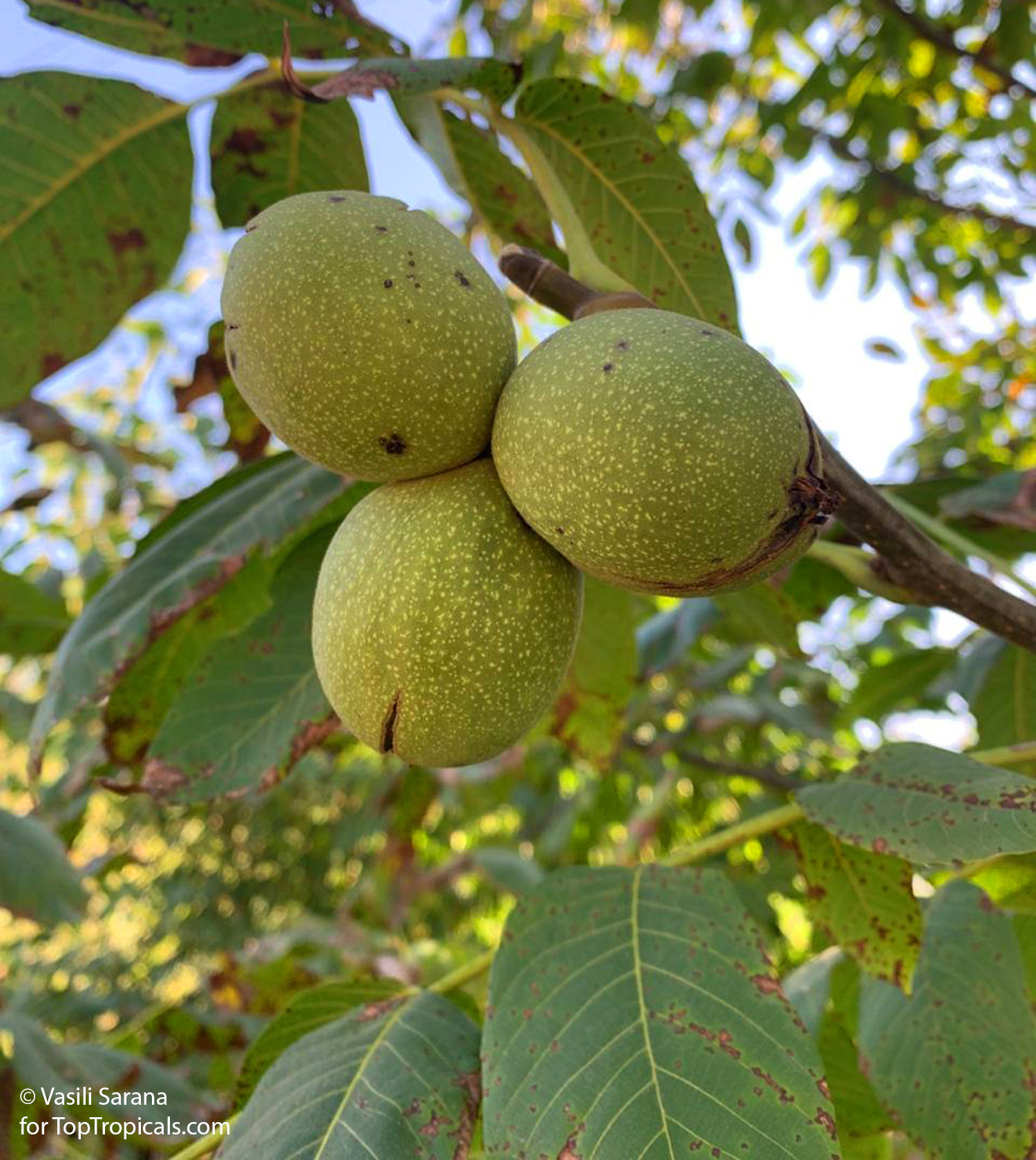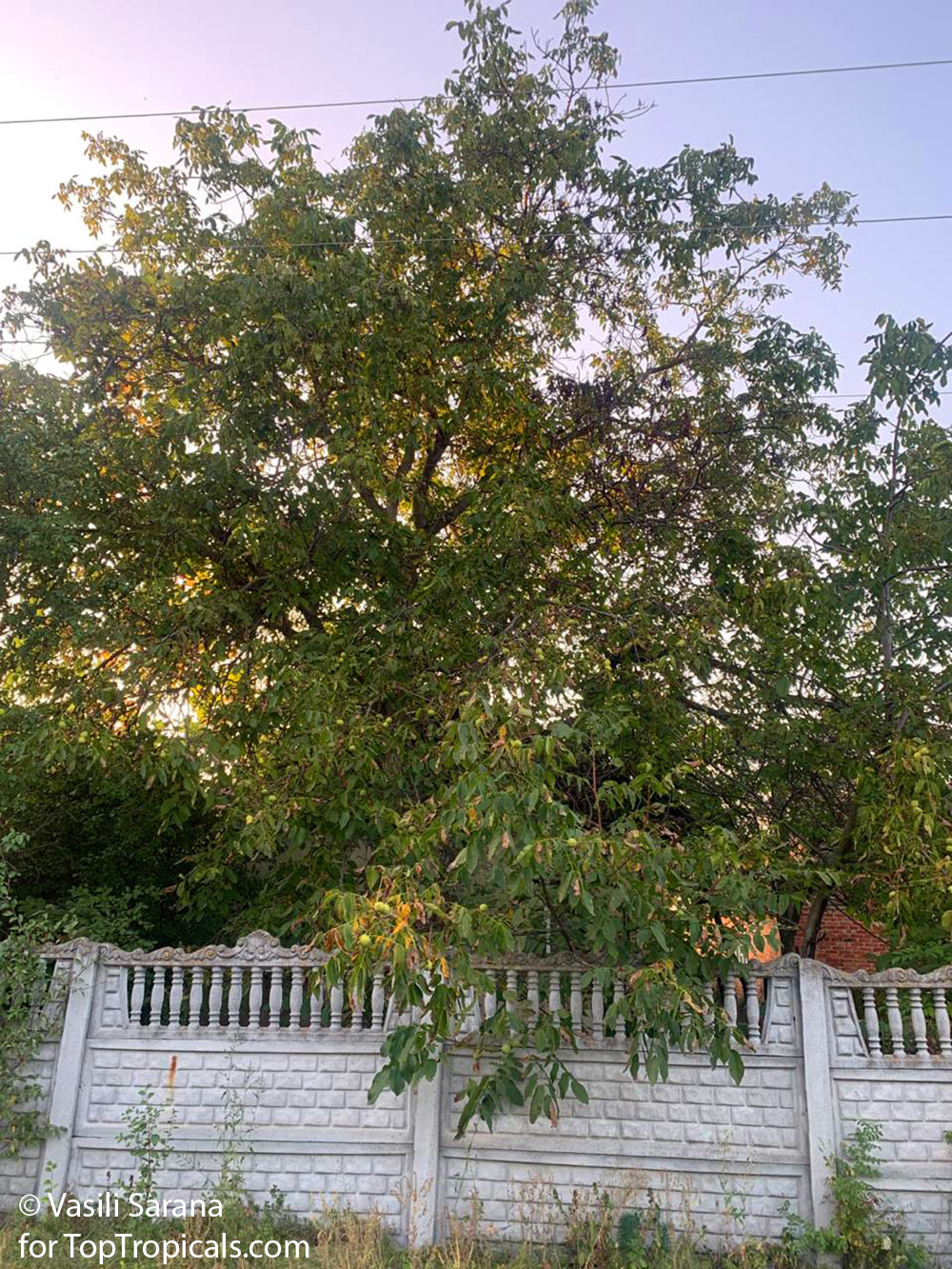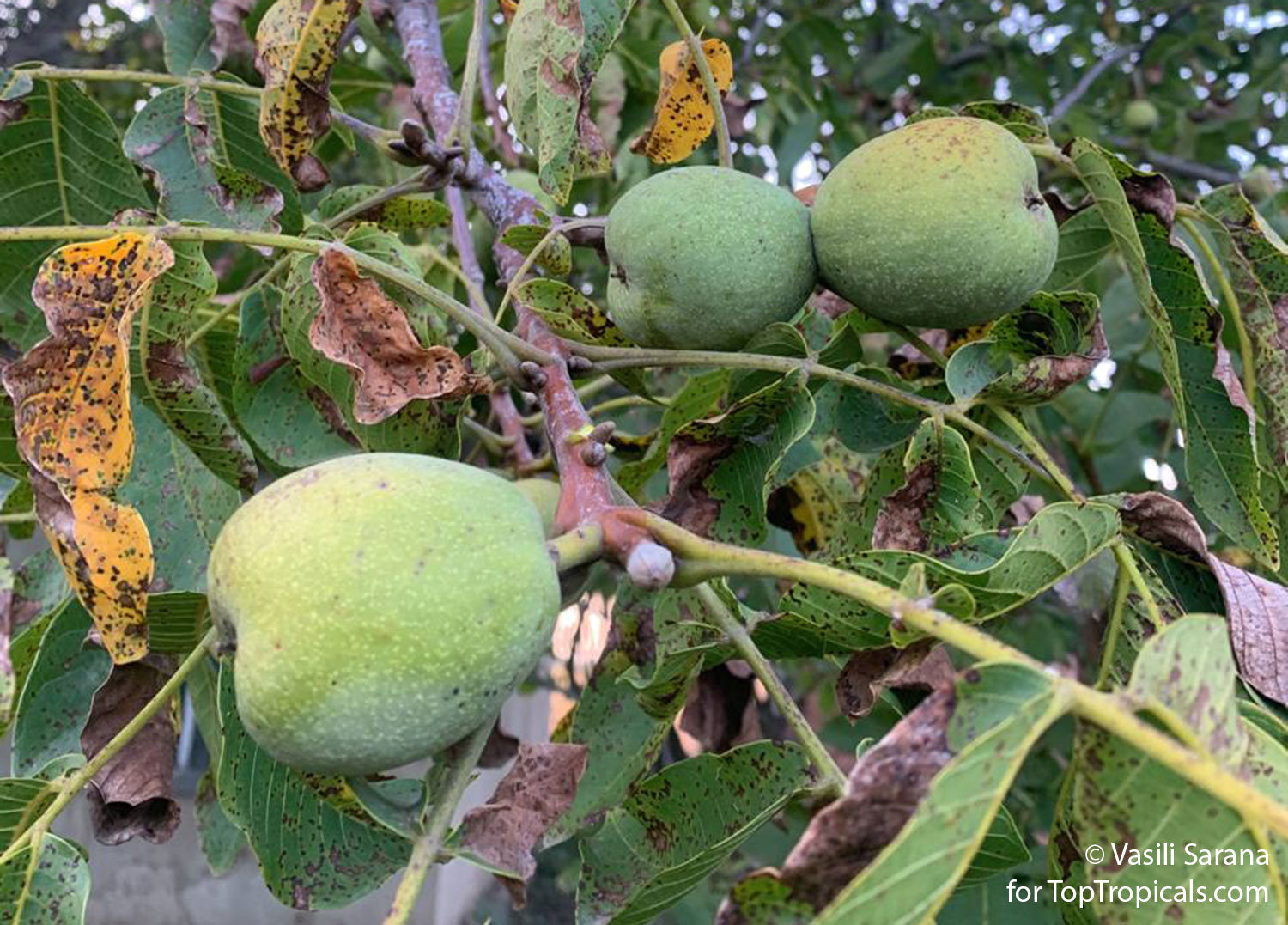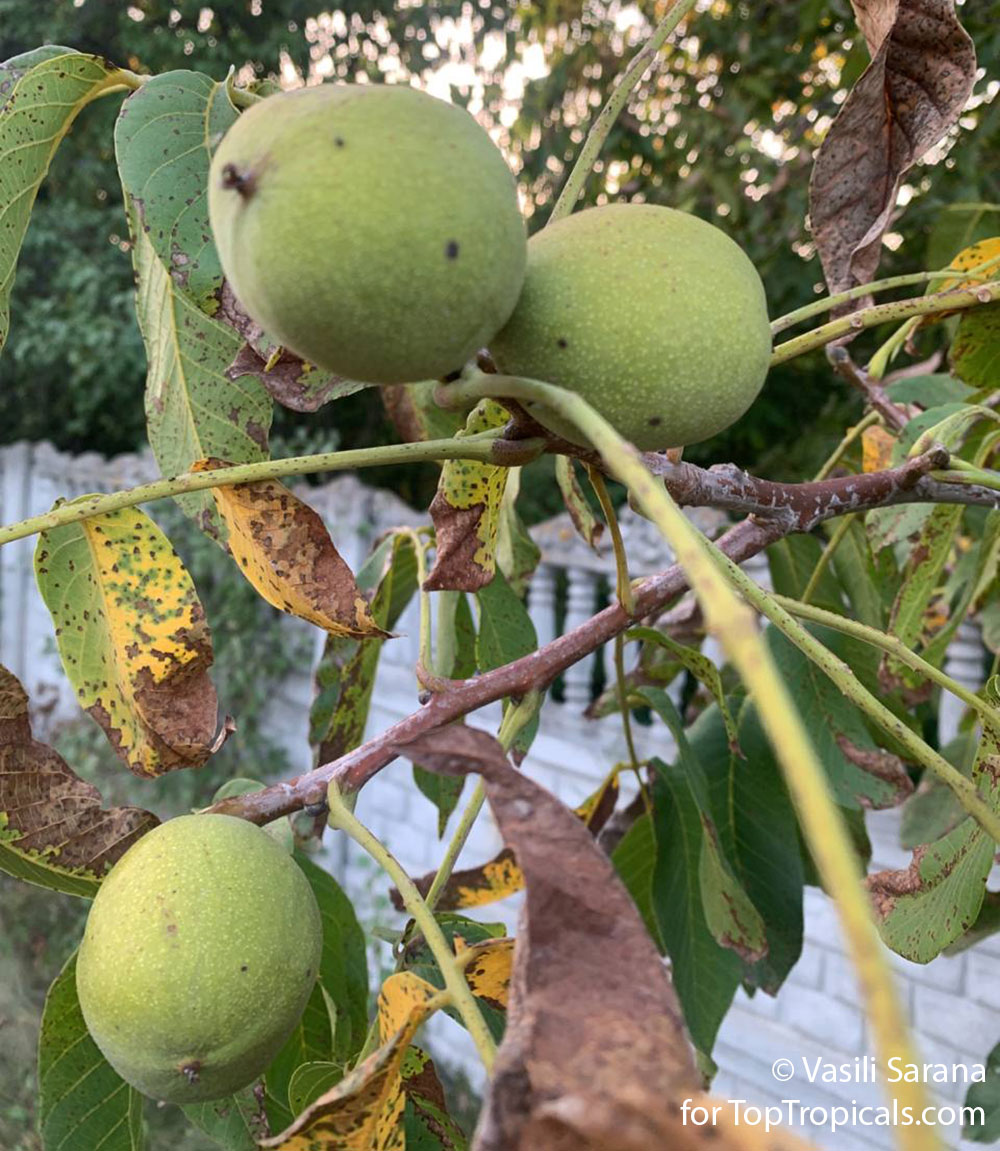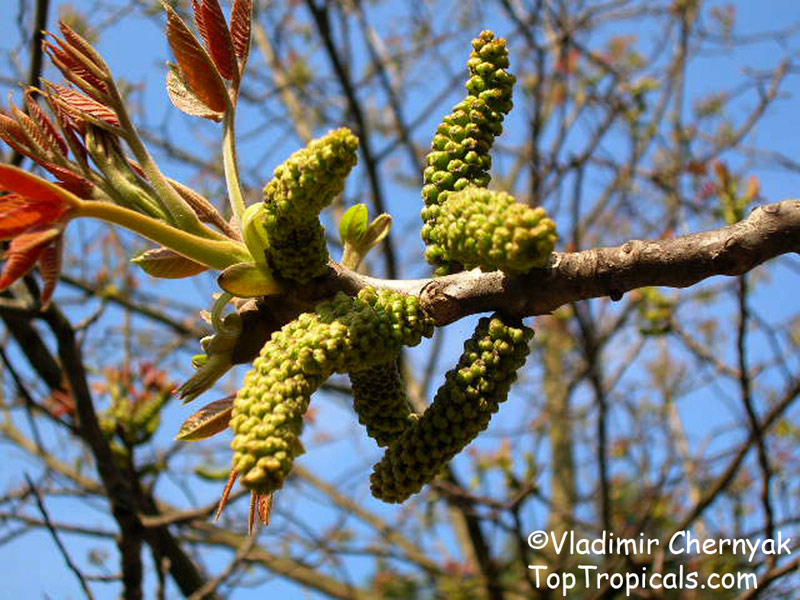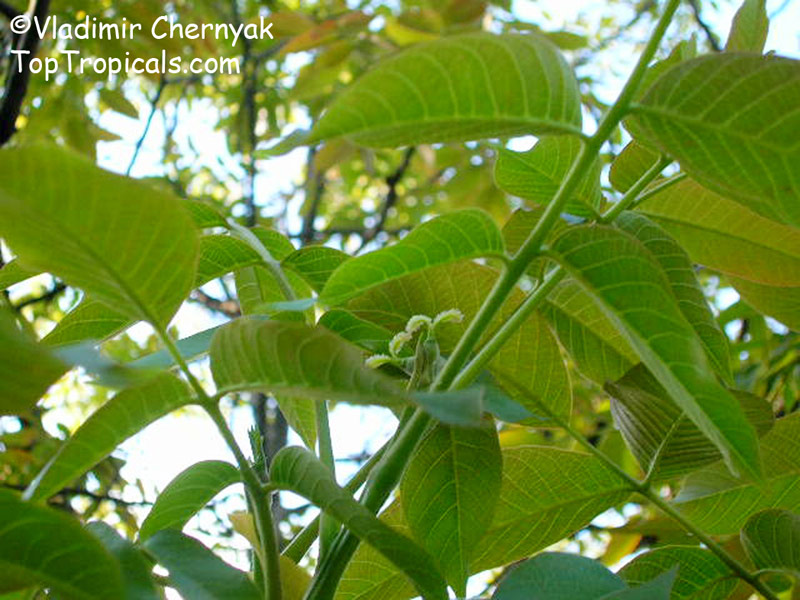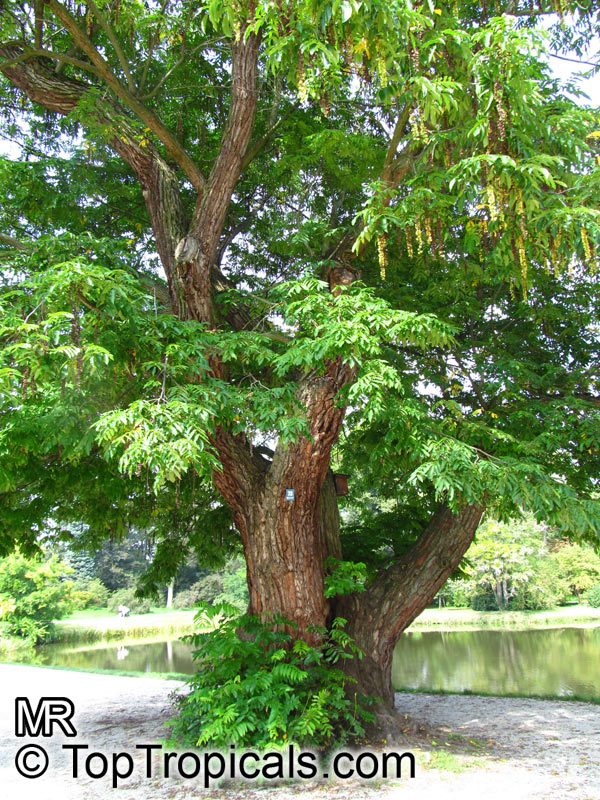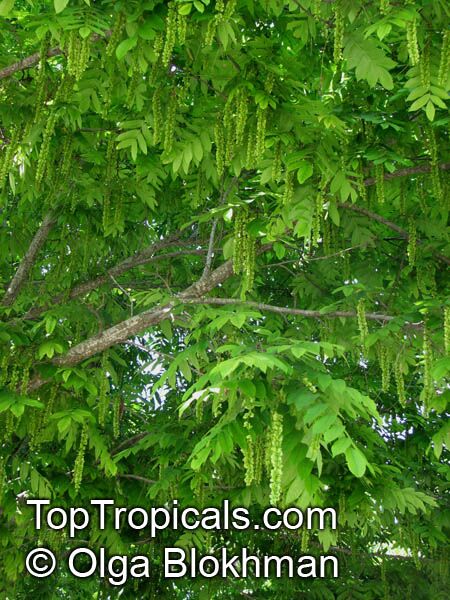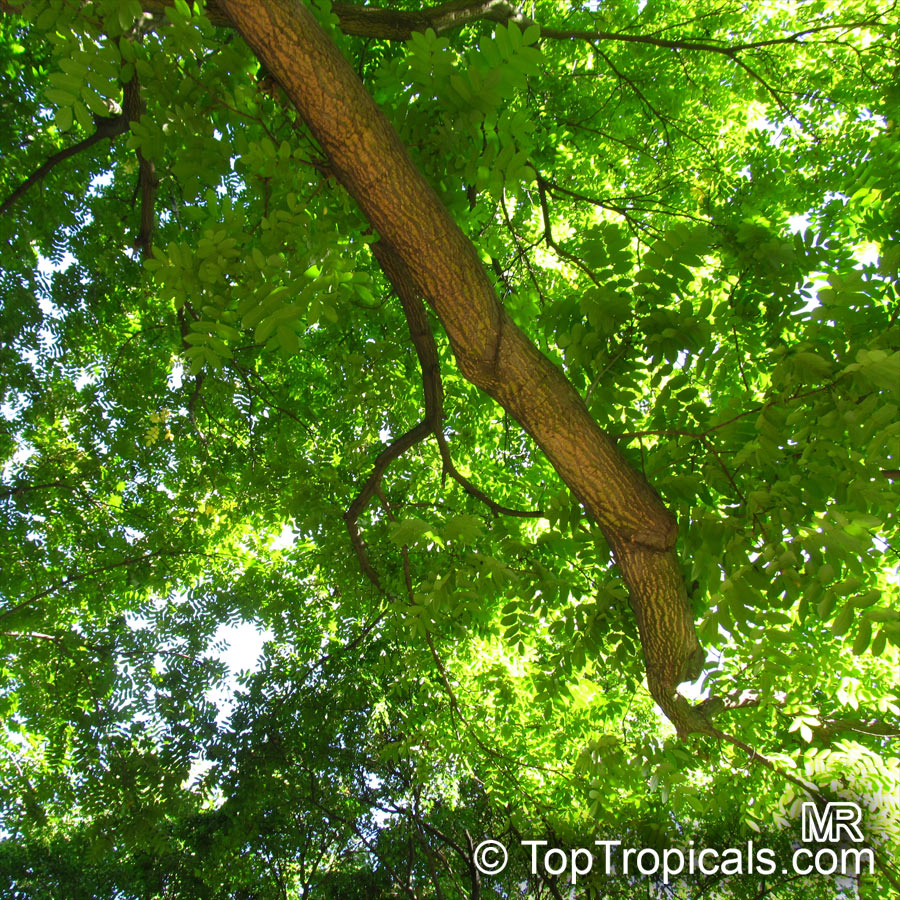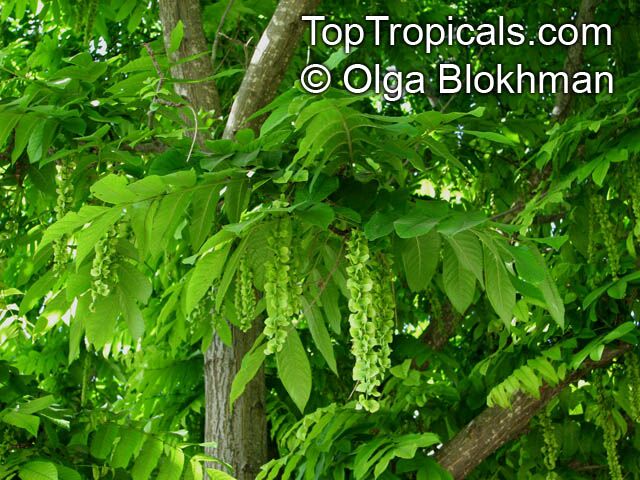Juglandaceae - Botanical Family
Top Tropicals Plant Encyclopedia
| Number of plants found: 5 |
Botanical names: Carya illinoinensis, Carya pecan
Common name: Pecan
Family: Juglandaceae
Origin: Southern and Central United States








The pecan tree (Carya illinoensis) produces the edible nuts known as pecans. A mature pecan tree can produce up to 60 pounds of nuts in a single season.
The pecan is a type of hickory, and its nuts have a rich, buttery flavor. They can be eaten fresh or used in cooking, particularly in sweet desserts but also in some savory dishes. Pecans are a good source of protein and unsaturated fats. The word "pecan" comes from an Algonquian word meaning a nut that requires a stone to crack. The Spaniards brought the pecan to Europe, Asia, and Africa beginning in the 16th century. Pecans are native to the United States, and writing about the pecan tree goes back to the nation's founders. The pecan tree can live for more than 300 years.
Pecans grow primarily in the lower Mississippi Valley, extending from eastern Kansas and central Texas to western Mississippi and western Tennessee, and locally throughout northeastern and central Mexico. The tree prefers a humid climate and well-drained loam soils, although it can grow on heavy textured soils. Pecan seedlings can survive short periods of flooding. Flowering occurs from April through May, and the species is mostly self-incompatible, requiring multiple cultivars for pollination.
The pecan tree is cold hardy in USDA Zones 5-9. In colder regions, pecans can be grown in large containers and brought indoors during the winter months. The container should be large enough for the roots to spread and the tree to grow. During the growing season, the container should be watered thoroughly but not soaked, and fertilized two to three times with a general-purpose fertilizer. In the winter, the tree should be watered sparingly, and the soil allowed to become slightly dry between waterings.
Botanical names: Engelhardia spicata, Engelhardia aceriflora
Common names: Great Malay Beam, Mauwa
Family: Juglandaceae
Origin: Southeast Asia






Botanical name: Juglans neotropica
Common names: Colombian walnut, Ecuadorian walnut, Andean walnut, Nogal
Family: Juglandaceae
Origin: South America







Juglans neotropica (Colombian walnut) is a species of walnut native to South America. It is a large tree that grows in a variety of environments, and is especially abundant in cloud forests. Growing to heights of greater than 20 feet, this tree provides a valuable, shady habitat for many different species. It's canopy of thick, dark green leaves is particularly noticeable during the dry season when not many trees are in bloom.
A deciduous species, Juglans neotropica prefers to grow in full sun, though it can tolerate light semi-shade. It prefers regular water when first established, but as it becomes more mature the water requirements decrease to moderate levels. It can be grown in USDA zones 9-11.
Juglans neotropica is noteworthy for its large and edible nuts. The husks surrounding its nut must be removed in order to access the walnut. The process of husk removal often stains the shell of the nut black. The shells of the Juglans neotropica nut are very thick and heavy, and it is not easy to open. The nut itself is highly nutritious and can provide energy for a wide variety of animals and humans alike. Not only does the nut make a great snack or addition to recipes, it is also highly beneficial for health. It is rich in antioxidants and contains vitamins and minerals, making it a great source of dietary fiber and essential fatty acids.
Juglans neotropica is capable of producing high yields of its nuts. Though the exact number of nuts produced per tree varies with season and age, most mature specimens can produce up to sixteen nuts per tree.
For those in cold regions who want to grow Juglans neotropica in a pot, it can be done. The tree will thrive when grown in a well drained soil and watered regularly - however, making sure the soil does not become waterlogged is key for success. Additionally, bringing the tree indoors during the winter months and providing it with as much sunlight as possible is recommended. By following this regimen, the tree can survive and even thrive in cold regions.
Botanical name: Juglans regia
Common name: Persian Walnut
Family: Juglandaceae
Origin: Central Asia







The Persian Walnut, also known as the English Walnut and Carpathian Walnut, is a majestic tree famous for its tasty and nutritious nuts. It's a valuable addition to gardens and orchards, offering shade, beautiful foliage, and a delicious harvest. With proper care, it can flourish for generations to come.
The Persian Walnut, known by different names like English Walnut and Carpathian Walnut, is a splendid tree with a rich history. It's famous for its tasty nuts, which are enjoyed worldwide. These trees are quite impressive, growing up to 50-100 feet tall with a sturdy trunk and a broad canopy of green leaves.
Leaves:
The leaves are large and pinnate, which means they have multiple leaflets arranged along a central stem. They're a vibrant green color and provide ample shade during the hot summer months.
Fruits:
The Persian Walnut tree produces delicious nuts, encased in a hard shell. These nuts are not only tasty but also packed with nutrients. They're used in baking, cooking, and as snacks.
Habitat:
You can find Persian Walnut trees in many parts of the world. They thrive in temperate climates with well-draining soil. These trees are often grown in orchards and home gardens.
Cultural Significance:
The Persian Walnut has been cultivated for centuries. It's prized for its wood, which is used in making fine furniture and cabinets. The nuts are also a symbol of health and wisdom in some cultures.
Care and Maintenance:
To grow a healthy Persian Walnut tree, make sure it gets plenty of sunlight and water. Pruning can help maintain its shape and encourage better fruit production. Protect it from pests and diseases for a bountiful harvest.
Fun Fact:
The word "walnut" comes from the Old English words "wealhhnutu," meaning "foreign nut." This reflects its ancient roots and widespread cultivation.
Botanical name: Pterocarya fraxinifolia
Common name: Caucasian Wingnut
Family: Juglandaceae
Origin: Caucasus








Use link to repeat this search:
https://toptropicals.com/cgi-bin/garden_catalog/cat.cgi?search_op=and&keyword_op=and&language=e&family=Juglandaceae
&number=10&no_change_lang=1&user=tt&sale=1&first=0
